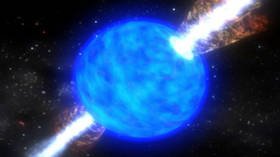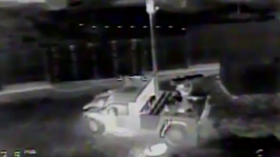Gold & platinum came to Earth in a massive star explosion – study

Our understanding of the origin of Earth’s heavy metals, such as gold and platinum, looks set to be completely rewritten after new research which suggests that they were spewed to our planet when a giant distant star exploded.
We’ve come up with countless ingenious ways to use heavy metals, from gold and platinum jewellery to uranium and plutonium in nuclear reactors, to less heralded elements like neodymium which is vital to many electronic devices.
A freshly published paper in the journal Nature finds that 80 percent of heavy metal elements in the universe were likely formed when old, massive stars collapsed in enormous supernova explosions called collapsars. These dramatic and heavy-element rich events are incredibly rare and typically involve stars that are 30 times bigger than our sun.
Also on rt.com Nerdgasm: Star Trek’s Starfleet logo spotted on Mars (PHOTO)The finding overturns the widely-held belief that heavy metals mostly come from collisions between neutron stars or between a neutron star and a black hole. Lead researcher Daniel Siegel, from the University of Guelph in Toronto, explained that, while collapsars are rare, they eject much more material into space than neutron star mergers.
“Our research on neutron star mergers has led us to believe that the birth of black holes in a very different type of stellar explosion might produce even more gold than neutron star mergers,” he said.
The scientists now want to back up their theoretical model with observations in the universe. Siegel said the research may offer clues about the creation of our galaxy. “Trying to nail down where heavy elements come from may help us understand how the galaxy was chemically assembled and how the galaxy formed. This may actually help solve some big questions in cosmology as heavy elements are a nice tracer,” he explained.
Like this story? Share it with a friend!













